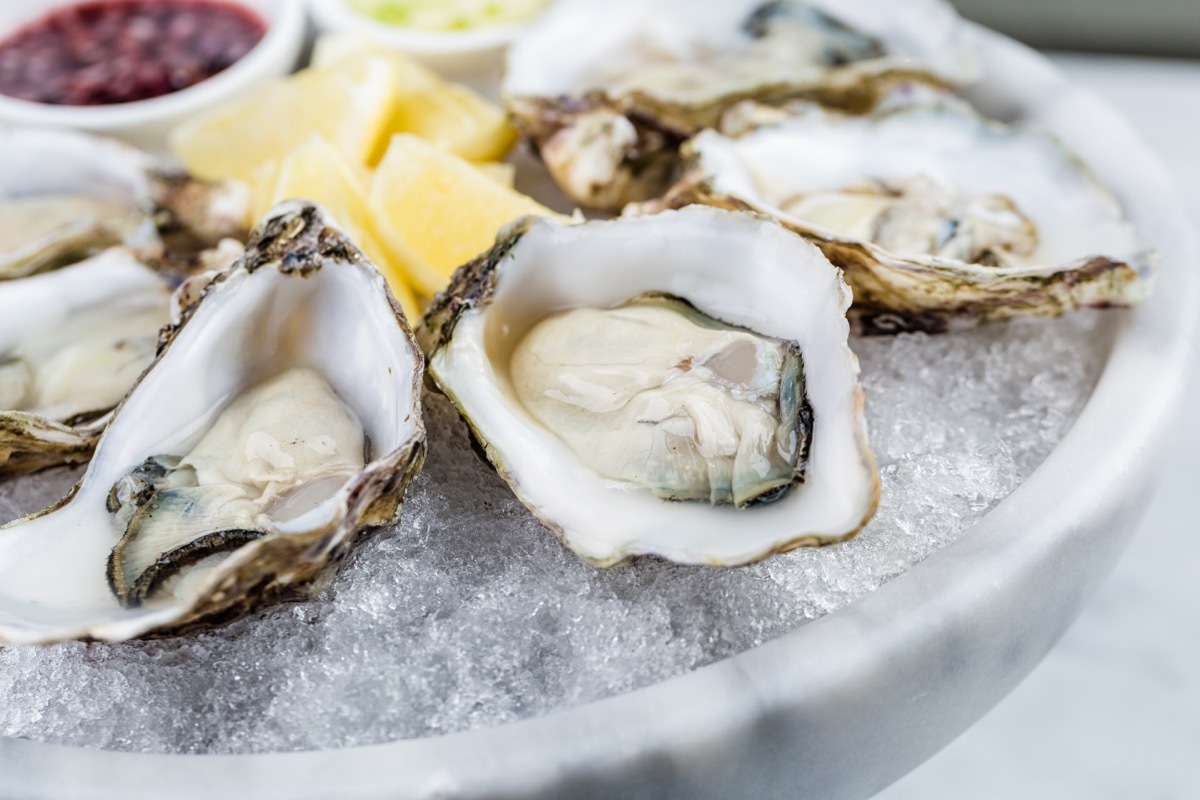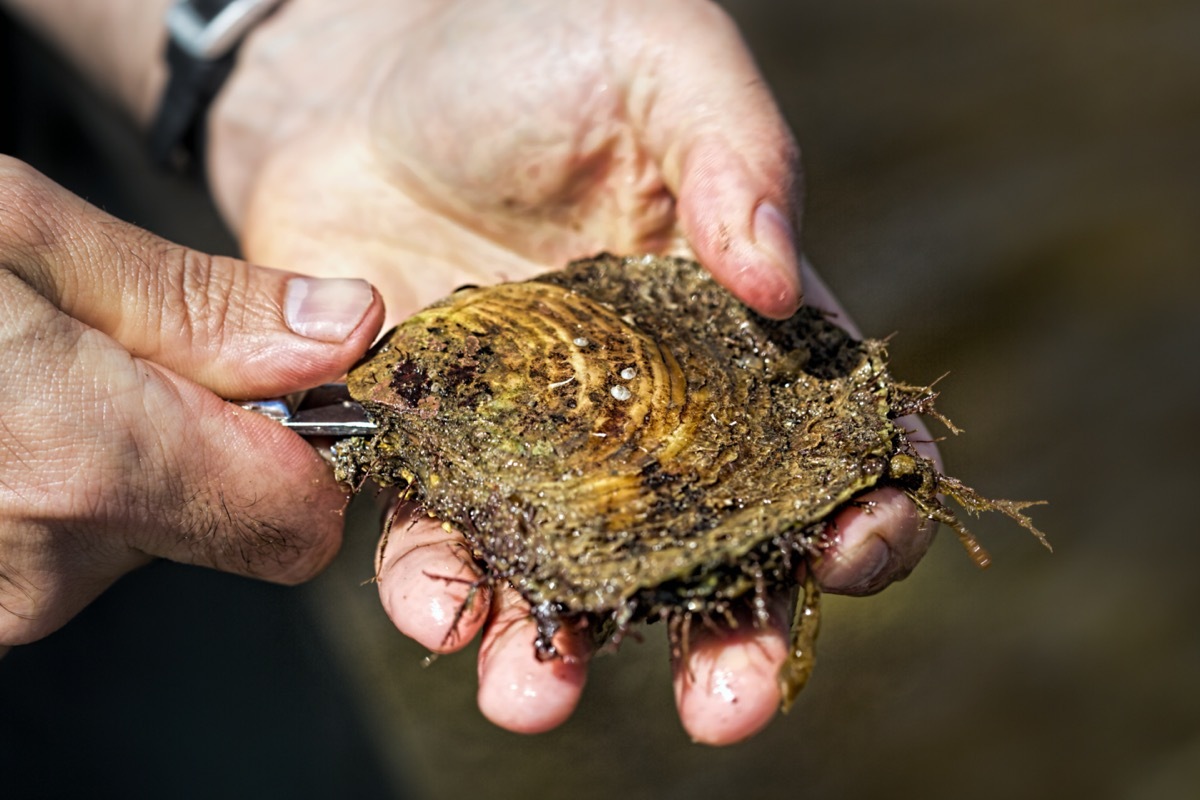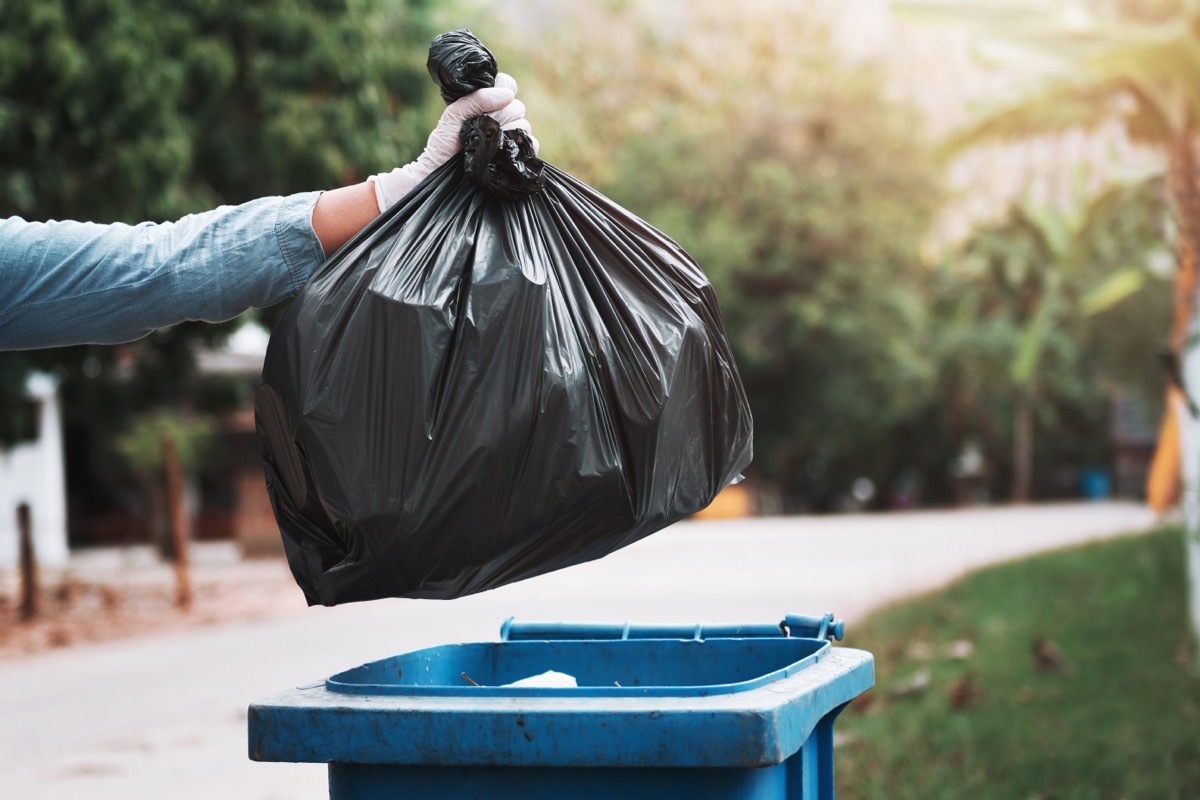If You Live in These 13 States, Don't Eat Raw Shellfish Right Now, CDC Warns
The health agency says you should cut back on the bivalves for the time being.

Whether you're hitting the raw bar at your favorite restaurant or shucking your own at home, eating raw oysters is a popular mealtime tradition worldwide. Unfortunately, the delectable seafood also presents plenty of risks to those who consume them. Now, the U.S. Centers for Disease Control and Prevention (CDC) and Food & Drug Administration (FDA) are warning that people who live in more than a dozen states should avoid eating certain raw oysters due to a viral outbreak. Read on to see which places should be wary of bivalves right now.
TERKAIT:If You Have Any of These Popular Peanut Butters, Get Rid of Them Now.
Seafood fans in 13 states should avoid eating oysters imported from British Columbia.

On April 4, the CDC and FDA posted an update on a major norovirus outbreak linked to raw oysters imported to the U.S. from British Columbia, Canada. The health agencies warn that the potentially infected shellfish went to restaurants and seafood distributors in California, Colorado, Florida, Hawaii, Illinois, Massachusetts, Minnesota, New Jersey, Nevada, New York, Oregon, Texas, and Washington. However, the FDA also warns that "it is possible that additional states received these oysters through further distribution within the U.S."
The affected oysters come from a specific area in the Canadian province.

According to the notices released by the agencies, the potentially contaminated oysters were harvested in the south and central parts of Baynes Sound, British Columbia, Canada. They're warning that restaurants and retailers should not sell or serve oysters from harvest locations or landfiles #1407063, #1411206, #278737 in BC 14-8, and #1400036 in BC 14-15. The agency says that "Baynes Sound" will show on product tags as "14-8" and/or "DEEP BAY," or "14-15." The FDA warns that the contaminated oysters may still look, smell, and taste normal.
TERKAIT:For more up-to-date information, sign up for our daily newsletter.
Eating raw or undercooked shellfish can lead to a potentially fatal infection.

According to the CDC, 91 illnesses have been reported by people who ate oysters contaminated with norovirus as of April 4. The agency says that norovirus is the leading cause of vomiting and diarrhea from acute gastroenteritis—or inflammation of the stomach and intestines—among people of all ages in the United States. It causes 900 deaths annually—typically among adults aged 65 and older—as well as 109,000 hospitalizations and 465,000 emergency department visits, mainly in young children.ae0fcc31ae342fd3a1346ebb1f342fcb
The FDA says that most people develop symptoms 12 to 48 hours after exposure to norovirus, which commonly includes diarrhea, vomiting, nausea, and stomach pain. Unfortunately, this can lead to dehydration, especially in children, seniors, or people with other illnesses. Typically, symptoms should clear up within one to three days, but the agencies warn that anyone who appears to be severely dehydrated should be seen by a doctor or healthcare professional.
Here's what you should do if you think you may have come in contact with contaminated oysters.

The CDC and FDA warn the public not to consume any oysters they believe may be from the affected areas. Anyone who purchased the shellfish from a retailer should also throw them away immediately. Customers should then make sure to wash any utensils or food preparation surfaces that may have come in contact with the oysters with hot, soapy water, including countertops and refrigerator shelves or drawers.
Even though raw shellfish pose more potential health risks to those who eat them, the FDA warns that noroviruses are still relatively resistant to heat and can survive temperatures up to 145 degrees Fahrenheit. This means that the quick steaming cooking processes some restaurants or recipes use for shellfish won't remove the risk of foodborne illness.
TERKAIT:These Common Heartburn and Pain Meds Were Just Recalled, FDA Warns.

15 cara mengejutkan cuaca dingin memengaruhi suasana hati Anda

